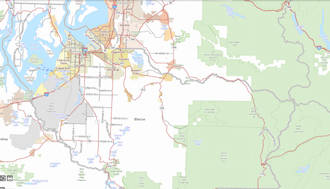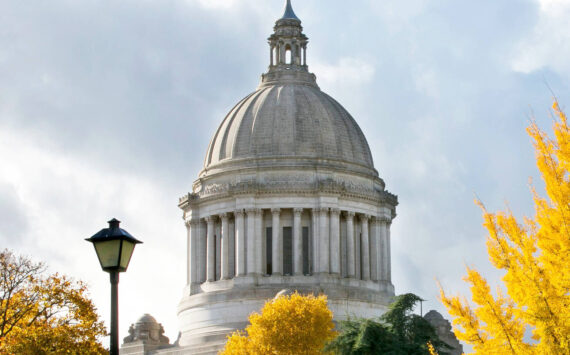By Morf Morford
Tacoma Daily Index
Pierce County is a very strange place.
Yes, I know, you’re going to say “Tell me something I didn’t already know.”
The word “strange” is of course subjective and usually based on opinion.
I’m not terribly interested in opinions; I’m interested in confirmable reality.
So when I say “strange” I don’t mean that I think it is strange, I mean it is by any standard, compared to any other county, verifiably and reliably odd, unusual and exceptional.
So here are some facts, my evidence, that Pierce County is, objectively, a very strange place.
According to the latest census, Pierce County has a population of a bit over 900,000. (According to the 2010 census the population was 795,225).
Pierce County is second, after King County, in terms of population in Washington state.
That makes it a larger population than each one of these entire states;
* Wyoming (572,381)
* Vermont 627,180)
* District of Columbia (Population: 711,571)
* Alaska (735,720)
* North Dakota (760,900)
* South Dakota (892,631)
All numbers are from the 2010 census.
And Pierce County is one large town away from the population of Delaware which has a population of 975,033.
When it comes to size, Pierce County is mid-sized by western state standards, but it is larger than the entire state of Rhode Island which holds 1,214 square miles. (Rhode Island has five counties, but no county governments).
According to the US Census Bureau, Pierce County has a total area of 1,806 square miles; 1,670 square miles is land and 137 square miles is water.
Pierce County is even larger than several entire independent nations (https://www.thoughtco.com/the-worlds-smallest-countries-1433446). Pierce County, by size is larger than Liechtenstein (62 square miles), Monaco (0.77 square miles), Malta (122 square miles) and even Barbados (166 square miles).
Pierce County holds over 180 named standing freshwater bodies of water (lakes, ponds and reservoirs) – https://co.pierce.wa.us/7068/Lakes-Monitoring.
Pierce County holds the highest point in Washington, Mount Rainier at 14,410 feet, and is one of the very few counties that holds entire river basins, from source to sea-water out flow; the Puyallup and the Nisqually.
Pierce County also borders six counties; King County to the north, Yakima to the east, Lewis County to the southeast, Thurston County to the south and southwest, Mason County to the west/northwest and Kitsap County to the north/northwest.
You might not think of Pierce County holding islands, but it does – several of them.
Some (like Anderson and Ketron) are accessible by county ferry, others (like Herron) are accessible by private ferry, while others (like Fox and Day Islands) have bridges, while others (like McNeil Island) are barely accessible at all.
One, Eagle Island, near Anderson Island is its own state park (with no facilities).
Oddly enough, the island most visible to much of Tacoma is Vashon Island, which is in King County.
No Pierce County islands are accessible by the Washington State Ferry system. Tacoma does however have the southernmost Washington State Ferry terminal, but it goes to Vashon/Maury Island.
Pierce County also has a few freshwater islands: American Lake has Silcox Island, Short Island, Barlow Island, Beard Island (the last three are in the JBLM side of the lake). Spanaway Lake holds Enchanted Island (though technically it is a peninsula, not an island). Alder Lake has Bogucki Island. Lake Tapps has two large islands, Tapps Island (https://www.tappsisland.net/new/) and Snag Island (http://www.snagisland.net/default.php) as well as multiple tiny islands.
And that’s one of the difficulties in defining islands in Pierce County; some emerge with the tide, others are seasonal.
Pierce County has urban centers, dense forests, open prairies, alpine peaks, historic areas, earthquake fault lines, tribal communities, a globally oriented port, a major military base, a world-renowned galloping (and collapsing) bridge, agricultural centers and glaciers, and probably a few more unusual, if not one-of-a-kind characteristics.
How many other counties have active volcanoes? (FYI, Mt. Rainier is NOT dormant.)
When it comes to natural threats and catastrophes, Pierce County may not have hurricanes, but we have just about everything else; some are fairly common and some so rare and unusual that they are literally unknown to the rest of the world; earthquakes, volcanoes, tsunamis, lahars, floods and forest fires are only a few.
We may not have a tornado alley, but we do have tornados. They don’t get huge, but they do get powerful enough to tear down garages or knock down trees. You can see a profile of Tacoma-area tornadoes here – https://www.geostat.org/data/tacoma-wa/tornados.
One of these tornadoes hit my house a few years ago; it felt like a rapidly growing rainstorm until it felt like a truck came out of nowhere and slammed against the side of my house – and left the neighbors’ roofing shingles across my yard.
We also have some disasters that don’t fit established disaster vocabulary.
For example, unusually warm winter, or early spring weather, could, even without rain, cause major flooding in the glacially fed river valleys as mountain snow melts precipitously. (https://www.co.pierce.wa.us/5599/River-Flooding)
We depend on our mountain ranges as dependable (and nearly free) storage of our summer water supply – but too much or too little can create major problems.
In such a volatile geographic landscape, you’d think we’d be particularly circumspect, if not overly cautious, about toxic and explosive products being either stored or transported.
But somehow, perhaps because major disasters only hit us once (or so) every lifetime, we have chemical tanks, oil trains and gas pipelines almost everywhere.
We are industrial and agricultural, rural, urban and residential. We have one eye on the past and one on the future, one hand in the local economy and another in the surging international markets.
Some parts of our landscape are virtually unchanged for millennia, while others seem to change on a daily basis.
We are rapidly developing and expanding, while, at the same time, protecting and preserving what we have.
We could be our own nation, and in some ways, perhaps, we are.






